Ambo and Expand
For the PCMI/IAS Teacher Leadership Program, Studio Infinity will be proposing a build with boxes based on repeated application of John Conway’s ambo operator to a polyhedron, so we’ll take a brief look at that operator here.
The ambo operation marks the midpoint of each edge of a starting polyhedron and then, for each vertex, cleaves the polyhedron with a plane through the marked points on edges adjacent to that vertex, “cutting” its corners in a very particular way: so that the newly-created faces from these cuts touch exactly at their vertices.
You can play around with ambo and other Conway operations using Anselm Levskaya’s neat web app polyHédronisme. Here are the first several polyhedra we get when repeatedly applying the ambo operation ($a$) starting with a cube ($C$):
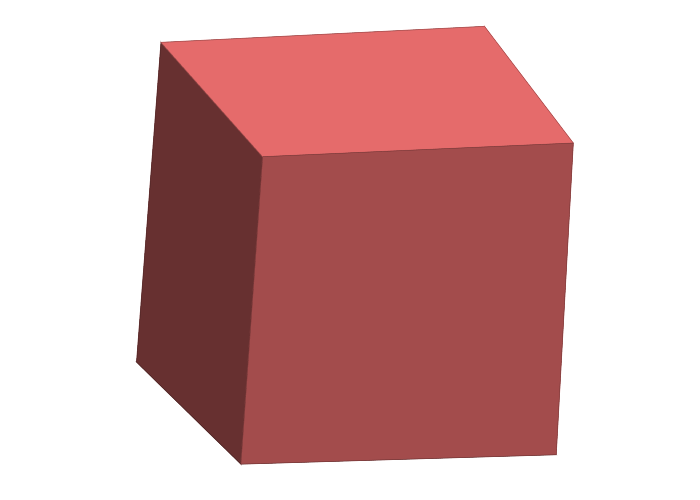
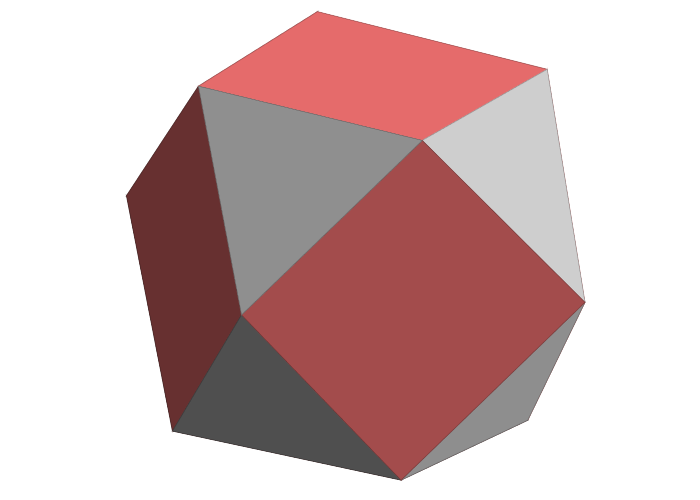
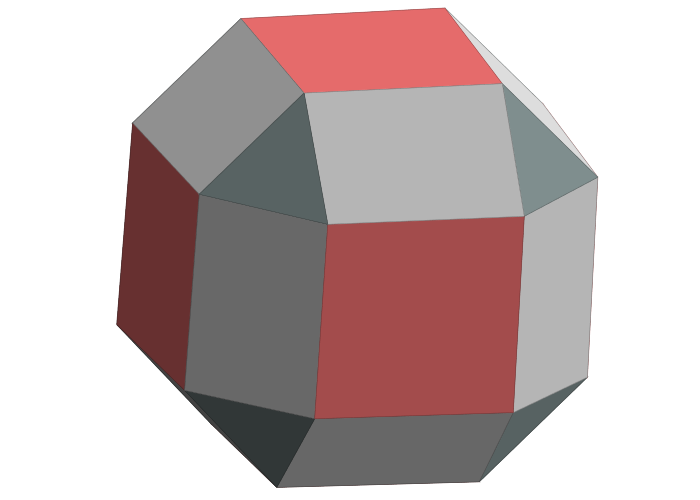
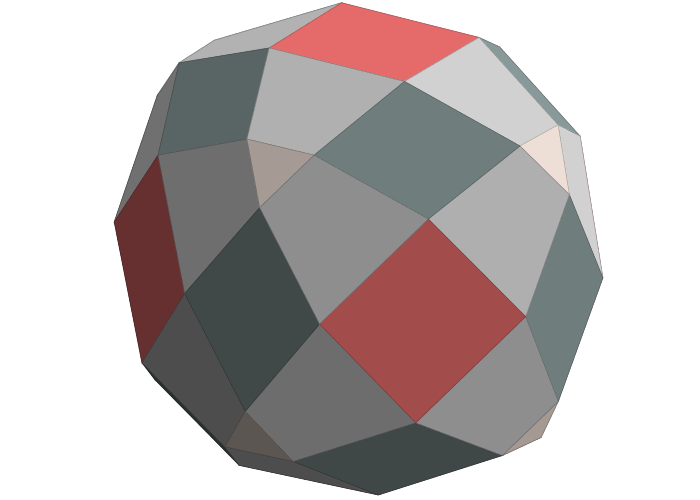
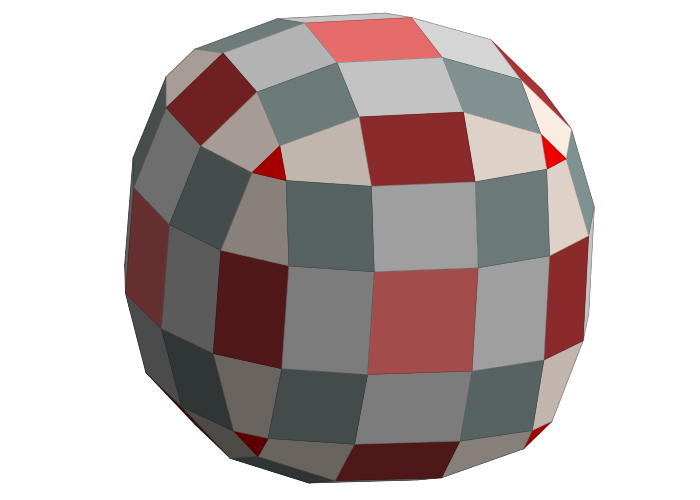
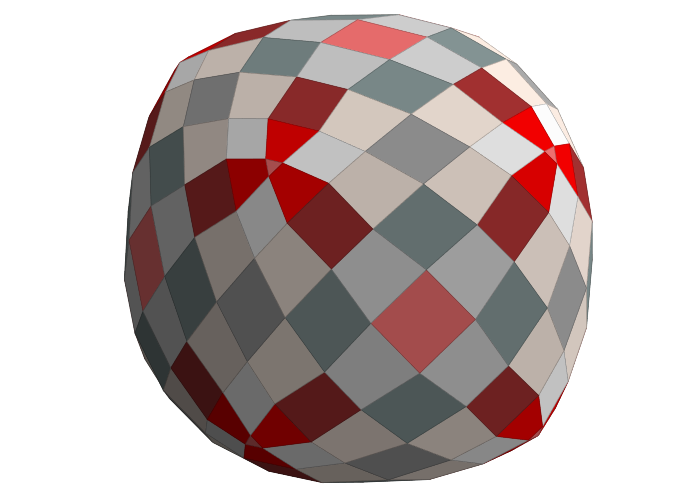
Here is another ambo sequence, this time starting with a dodecahedron ($D$):
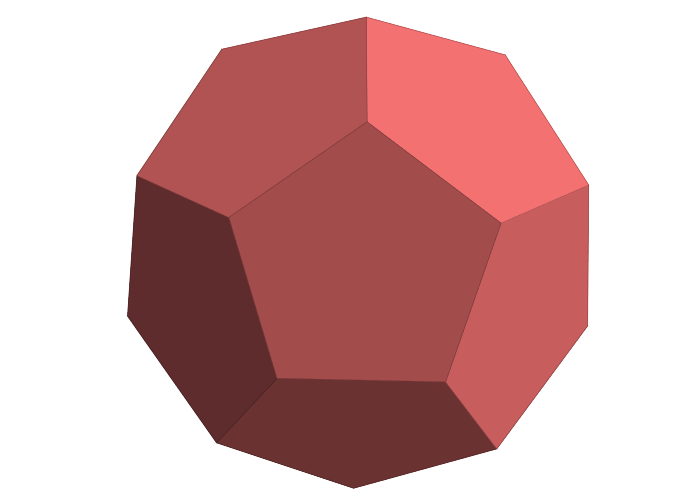
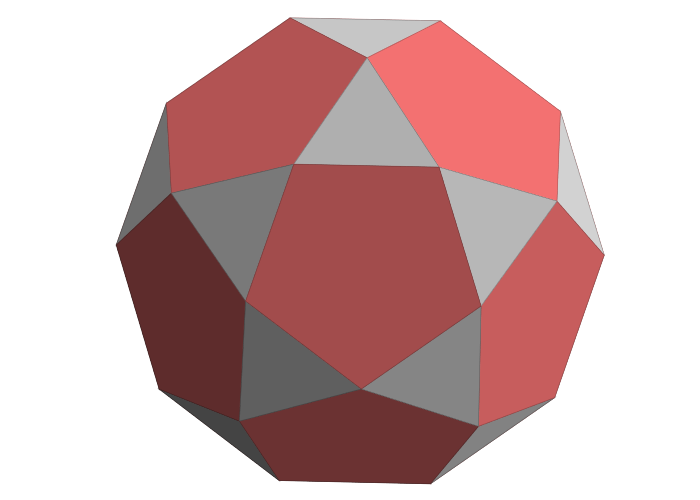
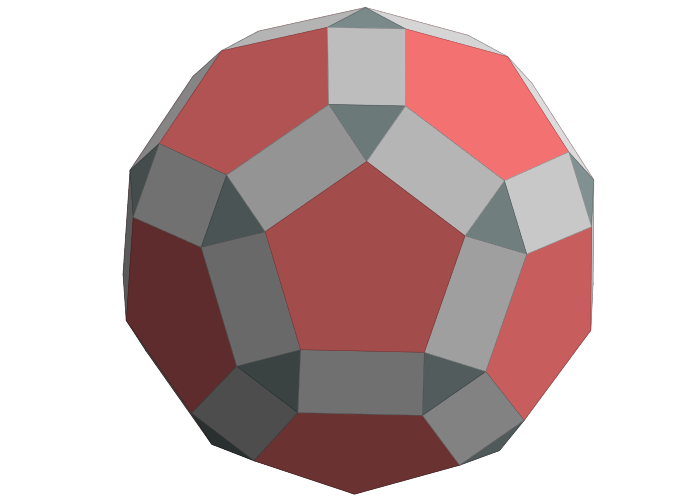
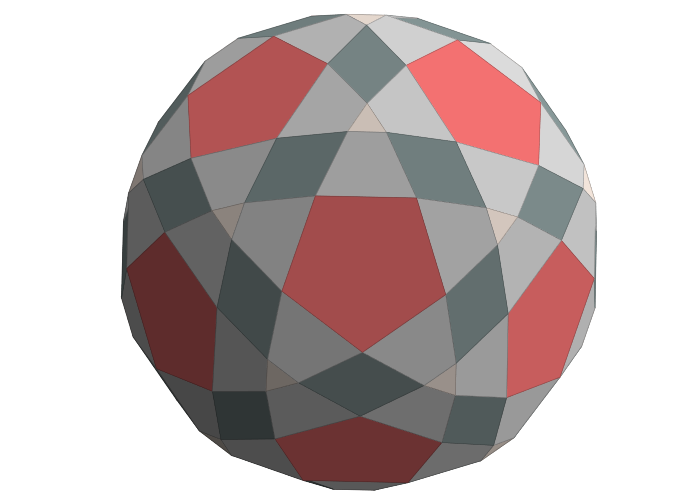
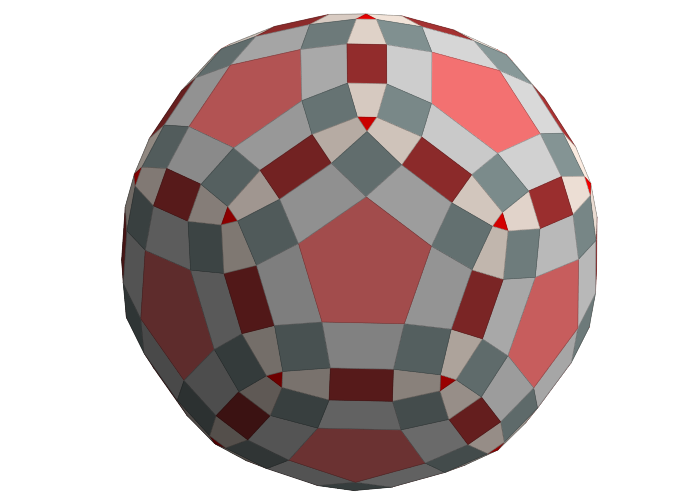
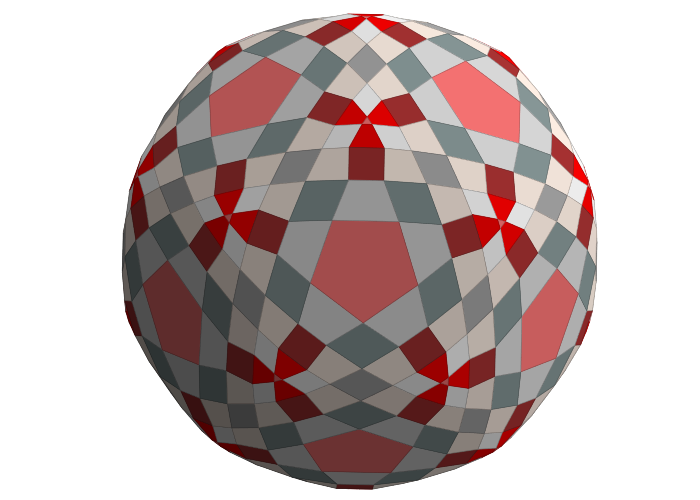
If you examine $aD$ and $aaaD = a^3 D$, you might notice they have a lot in common.


In particular, going from $aD$ to $a^3D$, there are still regular pentagons and equilateral triangles. However, their side lengths are no longer equal and their shared edges and vertices have expanded into trapezoids and rhombi, respectively.
The fact that $a^3D$ has trapezoids and parallelograms as faces instead of rectangles makes it seem like a poor candidate for building from boxes, but we can create a topologically equivalent polyhedron by taking the icosidodecahedron, translating its faces out radially so they continue to have equal edge lengths
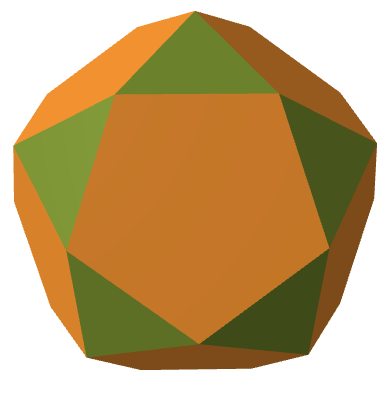

and then filling in the gaps with rectangles and rhombi.
By varying that translation distance, we can create any aspect ratio for the rectangular faces we like:

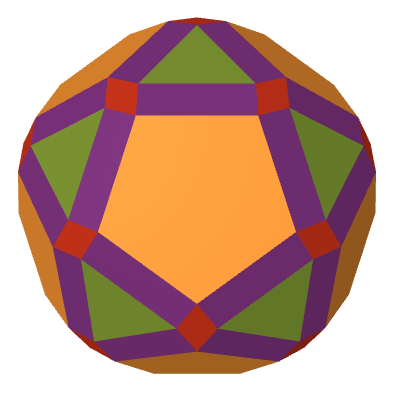

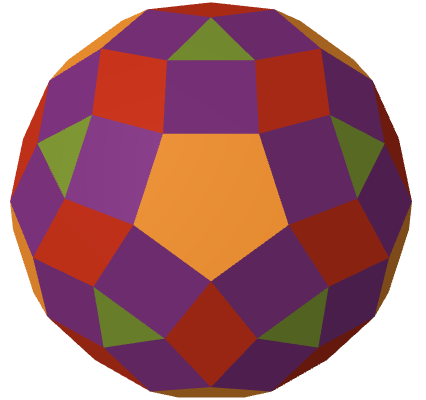
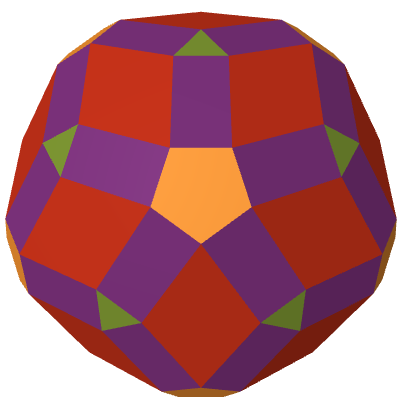
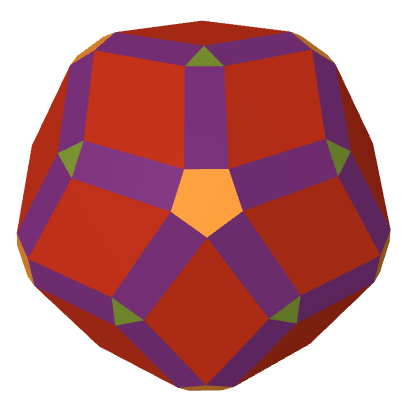
This operation of translating the faces and replacing the edges and vertices with new faces is called expansion or cantellation ($e$). In the example above, we can see that we have $eaD = a^3D$, at least in a combinatorial sense — this is no coincidence! In general, when the operations are well-defined for a polyhedron $P$, we find that $eP = a^2P$ in this same combinatorial sense, i.e., $e = a^2$ as operators.
This rectangle-heavy version of $a^3D$, otherwise known as an expanded icosidodecahedron, seems like a particularly nice candidate for a build, so it’s likely what we’ll propose. To that aim, we’ll close by recording some proportions we anticipate needing:
A regular pentagon of edge length $1$ has diagonals of length
$$\varphi = \frac{1+\sqrt{5}}{2} \approx 1.618$$
The rhombi are golden rhombi, and a golden rhombus with edge length $1$ has long diagonals of length
$$\frac{2\varphi}{\sqrt{1+\varphi^2}} \approx 1.701$$

